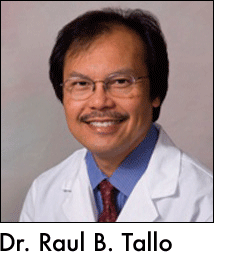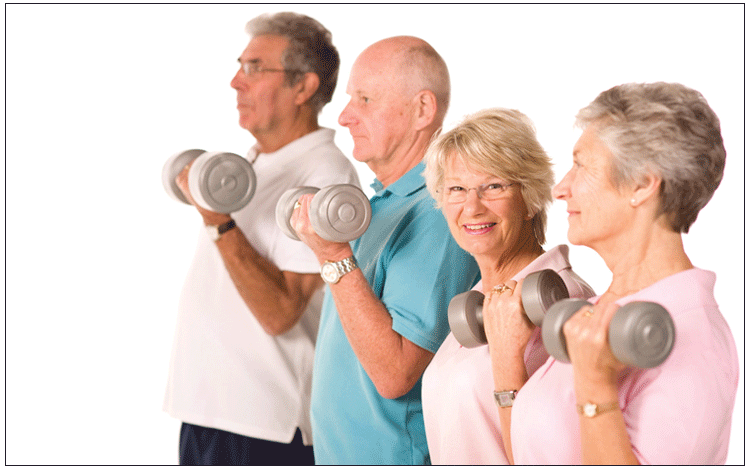We interviewed Dr. Raul B. Tallo, a rheumatologist with Lakeland Regional Health, about the bone disease osteoporosis.
Central Florida Health News (CFHN): Who is more prone to osteoporosis? Is it an elderly person’s disease? A women’s disease?
Dr. Raul Tallo: The National Osteoporosis Foundation recommends all men and women age 50 and older be evaluated clinically for osteoporosis risk. This includes age, gender (it’s more common in women), alcohol intake (more than three drinks per day), and current smoking and thinness (low body-mass index). A parental history of fractures (particularly maternal) and a person’s history of previous fractures also increases the risk for fractures further.
Secondary medical conditions that predispose a person to osteoporosis include systemic inflammatory diseases, such as rheumatoid arthritis and lupus; along with endocrine disorders, such as thyroid and parathyroid abnormalities, premature menopause, hypogonadism and gastrointestinal disorders that cause malabsorption. Certain medications for seizures and cancers as well as steroid medications also can predispose someone to osteoporosis.
 CFHN: What can be done to prevent osteoporosis?
CFHN: What can be done to prevent osteoporosis?
Dr. Tallo: Osteoporosis prevention starts with lifestyle modification. Limit alcohol intake to less than two drinks a day, avoid or stop smoking and limit caffeine intake. Maintain an active lifestyle, including weight-bearing exercises for about 30 minutes a day. Consume adequate amounts of dietary calcium (1,000 milligrams a day) and vitamin D (800 to 1,000 International Units/day). Supplement vitamin D intake to maintain a 25 hydroxy vitamin D level of 30-60 nanograms.
CFHN: Does supplementing calcium help prevent osteoporosis? Does it keep the problem minimal? What kind of calcium is recommended?
Dr. Tallo: Calcium is important in bone building and normal function of the various organ systems of the body. Ninety-nine percent of the calcium in the body is stored in bones and teeth. If we do not take adequate calcium for our body’s needs, the calcium is then taken from our bones.
The daily calcium requirement is 1,000 to 1,200 milligrams a day. Aim to get the recommended daily amount of calcium from food first, and supplement only if needed to make up the shortfall. Choose a brand with the U.S. Pharmacopeia (USP) label. It means it has met certain standards of purity and quality. Take any calcium supplements with food and in smaller amounts of 500-600 milligrams at a time for better absorption.
CFHN: What kind of test(s) can be done to assess an individual’s risk of developing osteoporosis?
Dr. Tallo: A bone density study is recommended to establish a diagnosis of osteoporosis. Bone density screening is generally recommended for women after age 65 and for men after age 70. In postmenopausal women and men ages 50 to 69, a bone density test is recommended based on risk factor profile. For those who have had fractures, a bone density test is recommended to assess disease severity. Risk for fracture is increased if the T-score is less than -2. The lower the T-score, the higher the risk for fracture.
Another tool that helps predict a 10-year probability for fracture incorporates the values obtained from the bone density test and Clinical Risk Factor Profile. A score of more than three percent for the hip and more than 20 percent for a major osteoporosis-related fracture indicates increased risk for fracture. Frailty, poor balance, vision problems, and muscle weakness predispose someone to falls, which further increase one’s fracture risk.
CFHN: Please discuss the pros and cons of estrogen replacement therapy. When is it advisable?
Dr. Tallo: Estrogen/Hormone Therapy is approved by the FDA for osteoporosis prevention and certain menopausal symptoms. Because of studies showing risk of certain conditions like blood clots in the lungs or veins with prolonged use, the FDA recommends it be used solely for osteoporosis prevention. Non-estrogen treatment should first be carefully considered.
CFHN: How is osteoporosis typically treated?
Dr. Tallo: There are several U.S. Food and Drug Administration (FDA)-approved drugs for osteoporosis treatment and prevention. These include the Bisphosphonates: Alendronate (brand name Fosamax), Actonel, Atelvia, Boniva, and IV Reclast; the selective estrogen receptor modulators, or SERM (Evista); Calcitonin; the parathyroid hormone (Forteo injection); and Prolia injection. The appropriate medicine for each person is best decided between the patient and his or her physician.
Postmenopausal women and men age 50 or older presented with the following should be considered for treatment:
• A hip or vertebral fracture.
• A bone density T-score of -2.5 or less, after appropriate evaluation to exclude secondary causes.
• A low bone mass (T-score between -1 and -2.5) and increased 10-year probability for fracture, based on the U.S.-adapted World Health Organization algorithm.
CREDIT
report by CENTRAL FLORIDA HEALTH NEWS
